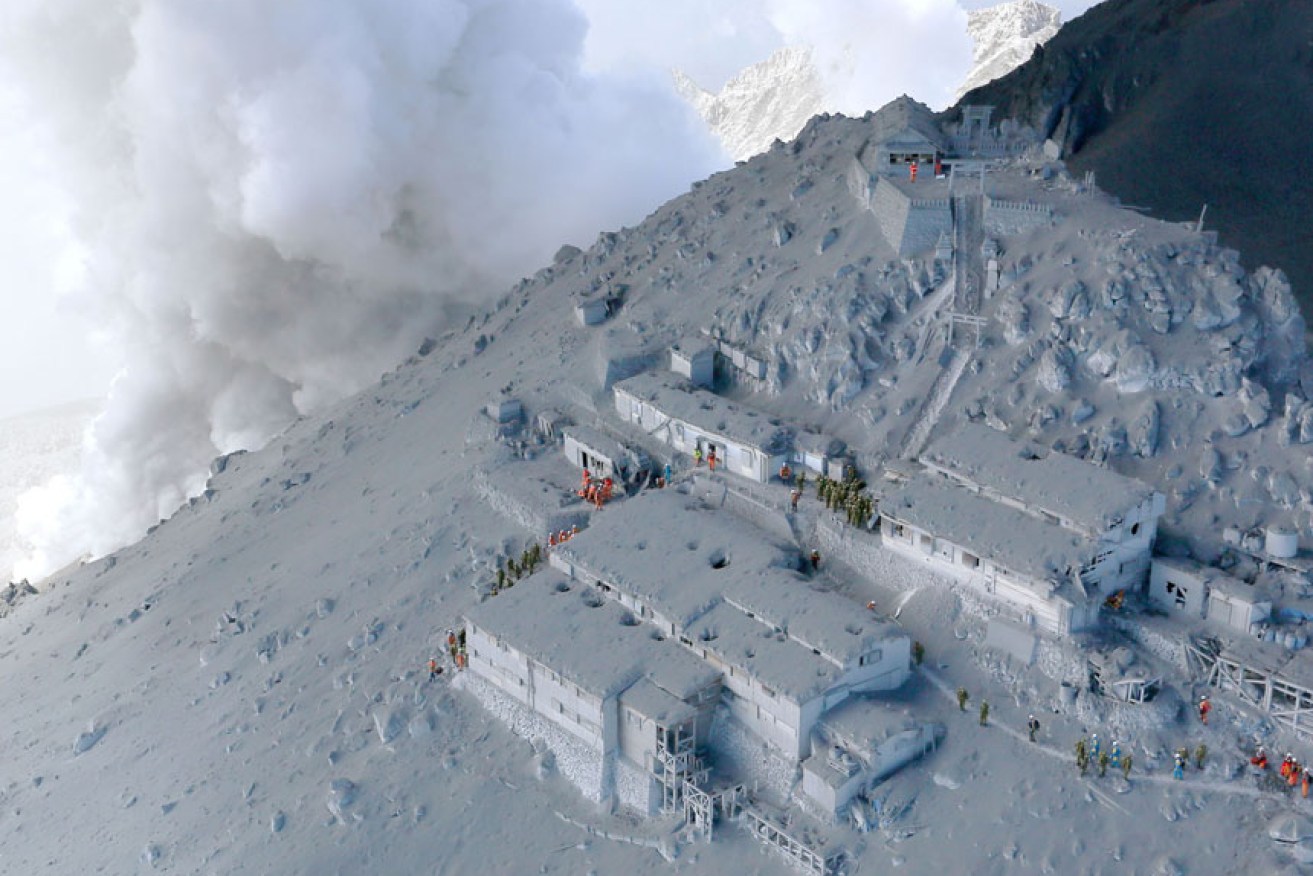Ash cloud was ‘hot, asphyxiating atmosphere’

Hikers caught out by the eruption of a volcano in Japan would have been faced with “an asphyxiating atmosphere” filled with ash at temperatures in the hundreds of degrees centigrade, an Australian geoscientist says.
Authorities are searching for survivors after Mt Ontake erupted on Saturday, catching hundreds of hikers unaware as it spewed clouds of ash and rock into the sky.
Four of 31 people found unconscious near the peak of the volcano, 200 kilometres west of Tokyo, have been confirmed dead.
• Thirty hikers feared dead after volcanic eruption
• Court bans Coles bread ads
• Killed ‘for being Australian’
Raymond Cas, Emeritus Professor at Monash University’s School of Geosciences, said those on the mountain, which is popular with hikers, would have been confronted by “very difficult” conditions.
“The ash cloud itself would be hot, because the ash and the gasses erupt at temperatures of hundreds of degrees centigrade,” he said.
“It would’ve been laden with lots of fine ash particles, and a lot of gas – it would’ve been an asphyxiating atmosphere within the cloud.
“And it’s not only the ash that’s blasting at you, it’s rock debris. Get hit by one rock and you’re basically unconscious.
“So you’ve got the factors of the force of that ash cloud – which is solid, turbulent and hot – and of course the fact that there’s not a lot of oxygen, which would’ve had a combined impact on those poor hikers who were killed.”

Mt Ontake erupts, killing more than 30 people. Photo: AAP
Even finding a lodge or building in which to take shelter would not guarantee safety, Professor Cas said.
“Particularly if there were windows or doors [because] the hot ash gets in through cracks,” he said.
“Any windows would just be shattered immediately by the force and temperature and so the ash and the gas gets in.”
More than 40 people were injured in the disaster, several with broken bones.
Experts said the eruption has now all but finished, but the ash itself could still prove dangerous if it rains.
“Japan, being in a monsoonal belt, gets very heavy rainfall periodically and during those rainstorms a lot of that ash would be immediately remobilised,” said Professor Cas.
“That generates another hazard in terms of ash-laden mud flows, which again hurtle down the slopes of the volcano, get funnelled into valleys and then that can cause further destruction.”
Eruption would have been ‘totally unexpected’, experts says
Footage shot by one of the hikers shows people scrambling down the side of the mountain in search of shelter, before the screen turns black with ash.
Volcanoes erupt periodically in Japan, but there have been no fatalities since 1991, when 43 people were killed by a pyroclastic flow at Mount Unzen in Nagasaki Prefecture.
Profesor Cas said the event on Mt Ontake was unusual in that there were not any clear indicators of an impending eruption.
“What we’d normally expect to see are some precursor indicators, such as earthquakes that are related to the migration of molten rock or magma through the crust to the surface, or increased amounts of gas released, or discernible movements of the ground,” he said.

Rescue team workers rush to Mt. Ontake. Picture: Getty
“However, as we’ve seen in the last weekend, occasionally volcanoes do erupt explosively without any obvious precursor sign.
“Particularly in a country like Japan, which has regular volcanic eruptions and has an excellent and sophisticated volcano monitoring systems, I suspect it was just totally unexpected.
“It’s not the way we’d like it to happen, but that’s mother nature.”
While there had been a rising number of small earthquakes detected at Mt Ontake since September, the eruption could not have been predicted easily, according to the Japan Meteorological Agency.






